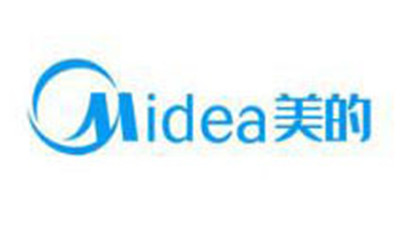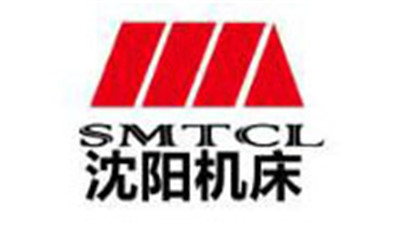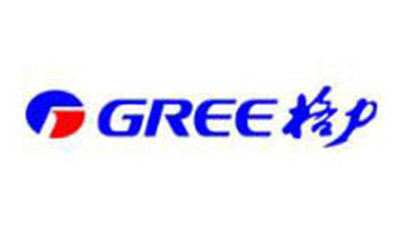Understanding the Role of Coil Inductors in Modern Electronics and Their Applications
Table of Contents
- The Basics of Coil Inductors: Principles and Functionality
- Key Characteristics of Coil Inductors That Influence Their Performance
- Applications of Coil Inductors in Power Electronics and Energy Storage
- Advancements in Coil Inductor Technology for Enhanced Efficiency
- Challenges in Designing and Integrating Coil Inductors in Modern Circuits
- Understanding High Frequency Inductor Coils: Applications, Benefits, and Selection Guide
- FAQS
- Conclusion
- Related Posts
 In today’s fast-changing world of electronics, you really can't overlook the importance of coil inductors. These tiny components are super crucial in all sorts of applications—whether it’s managing power or conditioning signals—they help ensure your devices run smoothly and efficiently. Industry reports are actually pointing to the fact that the global market for inductors, including coil inductors, is expected to hit around 5.3 billion USD by 2025, growing at about 4.6% annually. One company that’s been leading the charge in this space is Dezhou Xinping Electronics Co., Ltd. They’ve been around since March 2001 and focus on making precision electronic transformers. As a high-tech enterprise recognized nationally, they use cutting-edge manufacturing methods to produce high-quality coil inductors that meet today’s tough demands. All in all, they’re playing a key role in pushing the industry forward and helping improve the reliability of electronic products these days.
In today’s fast-changing world of electronics, you really can't overlook the importance of coil inductors. These tiny components are super crucial in all sorts of applications—whether it’s managing power or conditioning signals—they help ensure your devices run smoothly and efficiently. Industry reports are actually pointing to the fact that the global market for inductors, including coil inductors, is expected to hit around 5.3 billion USD by 2025, growing at about 4.6% annually. One company that’s been leading the charge in this space is Dezhou Xinping Electronics Co., Ltd. They’ve been around since March 2001 and focus on making precision electronic transformers. As a high-tech enterprise recognized nationally, they use cutting-edge manufacturing methods to produce high-quality coil inductors that meet today’s tough demands. All in all, they’re playing a key role in pushing the industry forward and helping improve the reliability of electronic products these days.
The Basics of Coil Inductors: Principles and Functionality
Coil inductors might not be the most glamorous component out there, but honestly, they’re pretty vital in today's electronics world. You’ll find them everywhere—power supplies, signal processing, energy storage—you name it. Basically, they store energy in a magnetic field when current runs through them, which helps filter signals, tune circuits, and keep things stable. I read somewhere that the global inductor market is expected to hit about $5.26 billion by 2025. That’s mainly because we’re all demanding more sophisticated gadgets and investing tons into fields like telecom and automotive tech. At Dezhou Xinping Electronics, we’ve been around since 2001, making all sorts of electronic transformers, including coil inductors. We’re pretty passionate about quality and innovation because, let’s be honest, with the rise of renewable energy and electric vehicles, high-performance inductors are more important than ever. Industry stats even show that a good inductor can boost power conversion efficiency by up to 30%. No joke, these tiny components make a huge difference when it comes to making our gadgets smarter and more energy-efficient.
Key Characteristics of Coil Inductors That Influence Their Performance
Coil inductors are pretty essential in today’s electronics — they’re key players when it comes to handling magnetic fields across a bunch of different applications. Basically, their performance depends on a few main stuff: the inductance value, the quality of the core material, and the shape or design of the coil itself. Lately, there have been some neat design tweaks, like improving iron-yoked systems, which help cut down the magnetic circuit’s reluctance. That’s a big deal because it boosts magnetic flux, making inductors way more efficient — especially important when you’re dealing with high-power setups that need to stay reliable no matter what kind of load they’re under.

The type of core material you pick really makes a difference too — it affects how much flux they can handle before saturating and how well they maintain their inductance. Research shows that soft magnetic materials are pretty much the go-to for high-power and medium-frequency inductors, since they help store energy better and reduce losses. Plus, with tech like NFC and RFID getting more popular, coil inductors are popping up more often in wearables and medical gadgets, making wireless data and energy transfer way smoother. And, by the way, Dezhou Xinping Electronics Co., Ltd. is actually quite well-positioned to take advantage of these advancements. They’re passionate about making high-precision electronic transformers, which helps push forward the whole realm of modern electronics.
Applications of Coil Inductors in Power Electronics and Energy Storage
Coil inductors are pretty essential in power electronics and energy storage stuff. They’re like the unsung heroes that help convert and manage electrical energy. If you’ve ever looked at power supplies, you’ll know that inductors do a good job of smoothing out the voltage, cutting down on those pesky voltage spikes, and keeping the power flow steady. Because they can store energy in a magnetic field, they’re super efficient when it comes to transferring energy — which is why you see them in transformers, wireless charging setups, and all kinds of converters like buck and boost types.
A quick tip when you’re choosing inductors for your projects: pay attention to the saturation current rating and the DC resistance, known as DCR. A higher saturation rating means the inductor can handle bigger peaks without losing efficiency, and a lower DCR just means less energy wasted as heat. Both are pretty important.
On the energy storage front, coil inductors are key players in resonant circuits and energy harvesting tech. They help optimize how energy flows and make sure everything runs smoothly even when the load changes. You’ve probably seen them in flyback converters or those fancy inductive wireless charging systems — they’re pretty versatile and crucial in modern electronics.
Another thing to keep in mind is thermal management. Making sure your inductors stay cool enough is vital for keeping your device reliable and performing well over time. Good heat dissipation isn’t just about safety — it actually helps your whole setup run better and last longer.
Advancements in Coil Inductor Technology for Enhanced Efficiency
Coil inductors are actually super important in today's electronics, especially when it comes to managing power and processing signals. Lately, there's been some pretty exciting progress in inductor technology — like, they've become way more efficient. Stuff like new core materials and smarter winding techniques have really helped cut down losses, so these inductors can now handle higher frequencies without heating up as much. That kind of boost is a game-changer for everything from your favorite gadgets to big industrial machines.
And, with devices getting smaller and more compact, designers have had to come up with ways to squeeze inductors into tighter spaces — but still keep them performing well. They’re using things like automated winding and multi-layer structures, which basically means they can create high-density inductors that fit into tiny spots without losing their effectiveness. These tech advancements aren’t just about making things better performance-wise—they’re also helping us save energy and make devices last longer. As industries keep pushing forward and innovating, the importance of these advanced coil inductors is only going to grow when it comes to building smarter, more efficient electronics that really work for us.
Understanding the Role of Coil Inductors in Modern Electronics and Their Applications - Advancements in Coil Inductor Technology for Enhanced Efficiency
| Inductor Type | Inductance Range (µH) | Current Rating (A) | Core Material | Applications |
|---|---|---|---|---|
| Air Core Inductor | 1 - 1000 | 0.1 - 10 | Air | RF applications, tuners |
| Ferrite Core Inductor | 10 - 200 | 1 - 30 | Ferrite | Power supplies, converters |
| Toroidal Inductor | 0.1 - 1000 | 0.5 - 50 | Ferrite or iron | Audio amplifiers, filters |
| Choke Coil Inductor | 10 - 100000 | 5 - 100 | Various materials | Filter circuits, noise suppression |
Challenges in Designing and Integrating Coil Inductors in Modern Circuits
When it comes to modern circuits, designing and integrating coil inductors can be quite the challenge. Engineers have to juggle a lot—mainly, how to keep inductors small enough to fit into tight spaces without losing their essential properties. As electronics keep shrinking, figuring out how to pack these inductors in without messing up their performance really pushes everyone to get creative with design ideas and new materials. It’s a bit of a balancing act, too—matching inductance levels, choosing the right core materials, and winding the coils just right, all while making sure they fit onto those tiny printed circuit boards we’re all so used to these days.

And then there’s the whole issue of electromagnetic interference (EMI) and heat management. Coil inductors can sometimes introduce noise or cause signal issues, especially at higher frequencies. To get around this, engineers need to pay close attention to how they lay out their circuits, use proper grounding strategies, and sometimes even add shielding on those inductors. Plus, heat buildup’s a thing—inductors can get pretty warm during operation, which might affect how reliable they are and how the whole circuit works. Dealing with these problems means understanding both the electrical side of things and the physical limits of modern electronics, which keeps designers on their toes, always looking for smarter solutions.
Understanding High Frequency Inductor Coils: Applications, Benefits, and Selection Guide
High frequency inductor coils, primarily designed as spiral coils, are essential components in various modern electronic applications. These coils are constructed by winding insulated wires around a tube, which can either be hollow or contain a core made from iron or magnetic powder. This configuration allows for efficient energy storage and signal processing, crucial in many industries including power communications, medical equipment, and electric vehicle technology. According to a recent market analysis, the global inductor market is projected to reach USD 16.5 billion by 2025, highlighting the growing demand for high frequency inductors in cutting-edge applications.
The various types of high frequency inductors, such as fixed inductors, choke coils, and oscillating coils, cater to specific needs in the electronic circuit design. Their applications span a wide range, from energy-efficient LED lighting systems to sophisticated electric vehicle controllers. As industries increasingly focus on reducing energy consumption and enhancing performance, the role of high frequency inductors becomes increasingly pivotal. Furthermore, customized designs and OEM services are available, allowing companies to meet their specific requirements for inductance components more efficiently.
In the rapidly evolving landscape of electronics, selecting the right inductor is crucial. High frequency inductors not only contribute to the optimal performance of devices but also ensure compliance with industry regulations and standards. By considering factors such as inductance value, current rating, and core material, designers can enhance their product's reliability and effectiveness. As the industry shifts towards sustainable solutions, high frequency inductor coils are set to play a vital role in the development of innovative technologies.
FAQS
: Coil inductors are essential for converting and managing electrical energy in power electronics, helping to smooth output voltage, reduce voltage spikes, and maintain consistent power flow.
It's important to consider the inductor's saturation current rating and its DC resistance (DCR). A higher saturation current rating helps handle peak currents, while a lower DCR reduces energy losses.
Coil inductors are integral to resonant circuits and energy harvesting technologies, optimizing energy flow and ensuring stable operation under varying load conditions.
Recent advancements include new core materials and optimized winding techniques that enhance efficiency, allowing inductors to operate at higher frequencies with reduced heat generation.
Miniaturization has led to the development of smaller form factors for coil inductors, utilizing automated winding processes and multilayer structures to produce high-density inductors without sacrificing performance.
Engineers must manage the size and form factor of inductors while maintaining inductive properties, balance inductance values and core materials, and address issues of electromagnetic interference and thermal management.
EMI can be mitigated through careful layout practices, grounding techniques, and the use of shielded inductors to protect signal integrity, especially in high-frequency applications.
Proper thermal management is critical because inductors can generate heat during operation, which can affect their reliability and the overall performance of the circuit.
Advanced coil inductors improve the efficiency of electronic systems, lower energy consumption, extend device lifespan, and support the development of smart and energy-efficient solutions.
Coil inductors efficiently store energy in a magnetic field, facilitating effective energy transfer in transformers, inductive charging systems, and various converters, contributing to overall system performance.
Conclusion
Coil inductors might sound a bit technical, but they actually play a pretty big role in today’s electronics. They’re essential for storing energy and helping regulate power—a bit like the unsung heroes of circuit design. Understanding how they work, especially their key traits like inductance, resistance, and magnetic properties, really helps explain why they perform the way they do. You see, these little components are everywhere—making power systems more efficient and improving energy storage is their thing.
Thanks to some recent tech advancements, coil inductors are getting better at doing their job, with smarter designs and easier integration into modern circuits. Dezhou Xinping Electronics Co., Ltd., a high-tech company based in China, is really stepping up here. They’re experts at making precise electronic transformers, using these new innovations to craft high-quality coil inductors that match what today’s electronics industry demands. It’s pretty exciting to see how they’re pushing the technology forward, don’t you think?
Related Posts
-

Ultimate Checklist for Selecting the Best Air Core Inductor for Your Projects
-

The Future of Innovative Applications in Aluminium Coil Technology
-

How to Choose the Right Dry Transformer for Your Industrial Needs
-

How to Choose the Right Substation Transformer for Your Energy Needs Based on Load Calculation
-

10 Essential Insights for Sourcing the Best Distribution Transformer Worldwide
-

How to Optimize Your Power Supply with Step Down Transformers
Blog Tags:


















